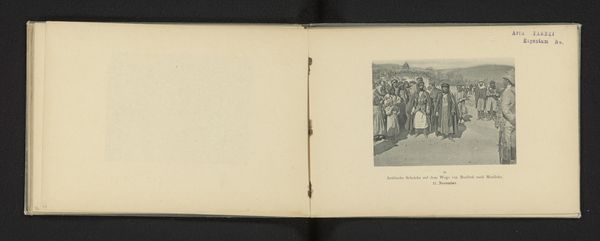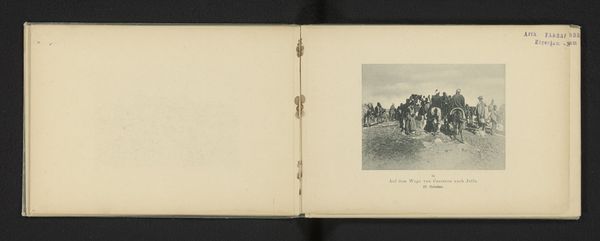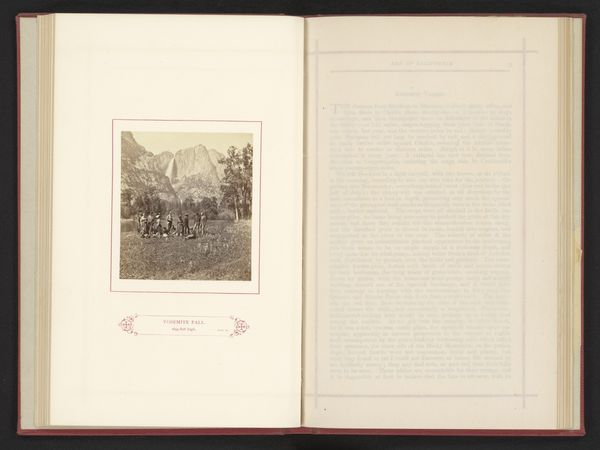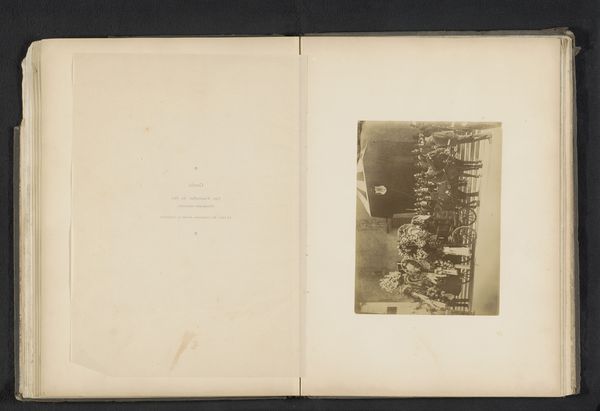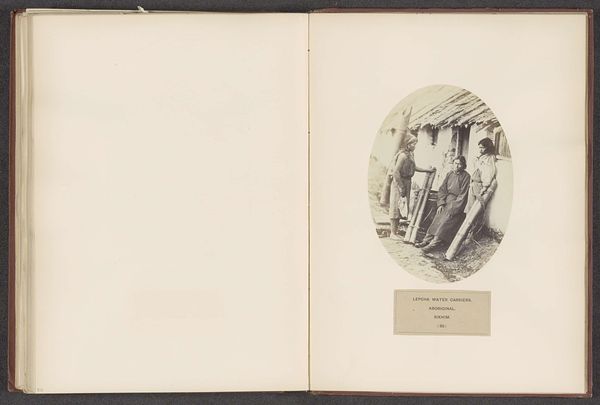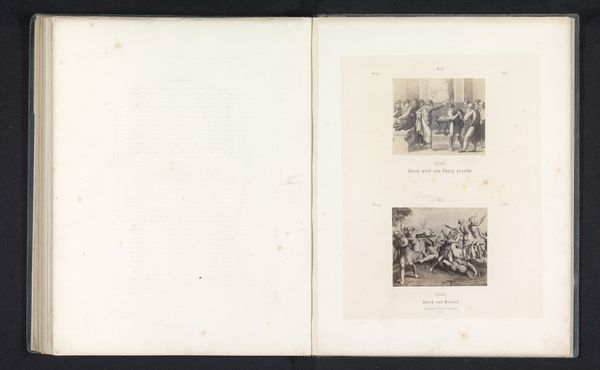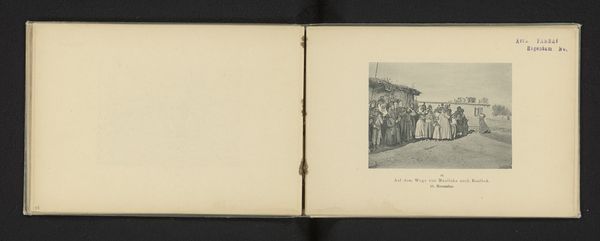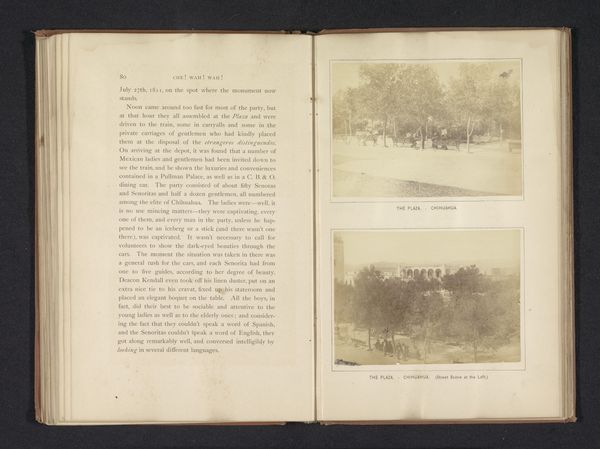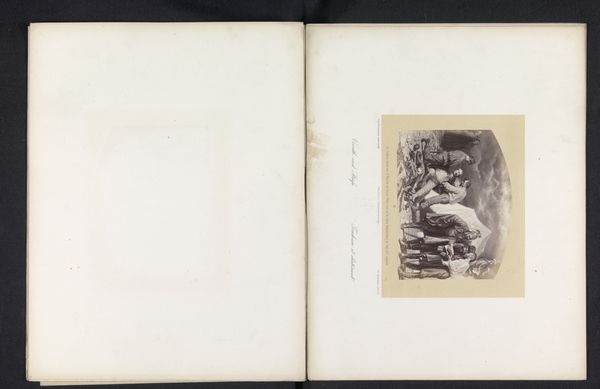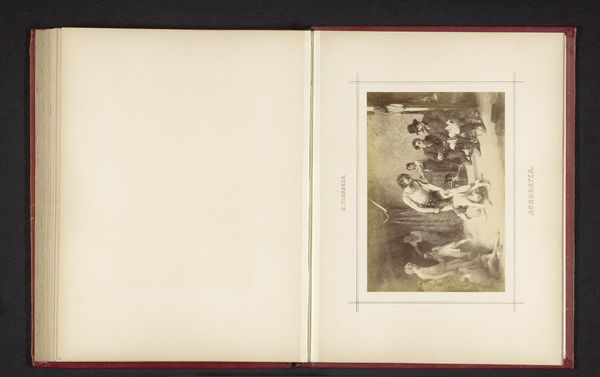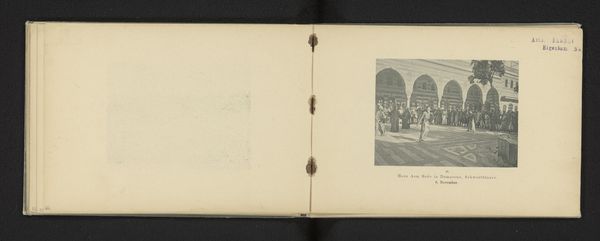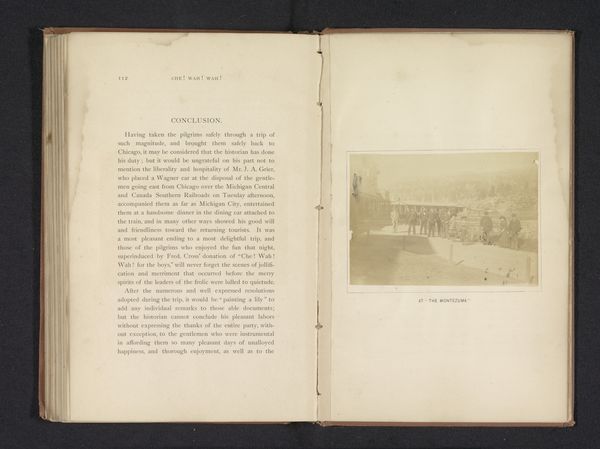
print, photography, gelatin-silver-print, albumen-print
#
portrait
# print
#
asian-art
#
photography
#
coloured pencil
#
gelatin-silver-print
#
genre-painting
#
albumen-print
Dimensions: height 139 mm, width 196 mm
Copyright: Rijks Museum: Open Domain
Editor: This gelatin-silver print, titled "Ceremonial Dance of a Tribe from Chota Nagpur" by Benjamin Simpson, was created before 1868. It’s striking how the photograph is presented within this oval vignette inside an album. What is particularly captivating about it? Curator: Indeed. Framing is everything, isn't it? Simpson's image of the dance taking place in Chota Nagpur, now part of Jharkhand, India, needs to be contextualized within the framework of British ethnographic studies of the 19th century. These photographs were often created to document, classify, and even control indigenous populations within the colonial system. What do you notice about how the dancers are posed or presented? Editor: Well, they are presented as a group. It feels posed but at the same time very authentic. The inscription clearly denotes that it's supposed to depict a ceremonial dance of some kind. I suppose my question is, how can we understand what we’re seeing without automatically resorting to stereotypes? Curator: That’s a crucial point. We must consider the power dynamics inherent in this image. Whose perspective are we seeing? Simpson's role as a photographer for the British Army Medical Service positions him as an outsider looking in. Therefore, we must critically assess the motivations and potential biases that framed this representation of tribal life. Are we seeing a true representation, or a romanticized, perhaps even manipulated, view intended for a European audience? Editor: So, the very act of documenting, though seemingly objective, already influences the narrative. That said, seeing it displayed in a museum setting challenges how we view art made during the colonial era, wouldn't you agree? Curator: Precisely. Displaying it prompts crucial conversations about the role of museums in perpetuating or challenging historical narratives. This photograph serves as a valuable lens to understand the colonial gaze, reminding us of the ethical responsibilities that museums bear in showcasing such materials. Editor: This definitely gives me a lot to think about when encountering similar historical pieces in a museum context.
Comments
No comments
Be the first to comment and join the conversation on the ultimate creative platform.
